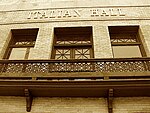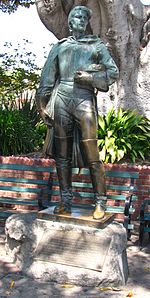El Pueblo de Los Ángeles Historical Monument
Adobe buildings and structures in CaliforniaAfrican-American Roman CatholicismAmerican West museums in CaliforniaBuildings and structures in Downtown Los AngelesDowntown Los Angeles ... and 14 more
El Pueblo de Los Ángeles Historical MonumentHistoric districts in Los AngelesHistoric districts on the National Register of Historic Places in CaliforniaHistory museums in CaliforniaHistory of Los AngelesMexican CaliforniaMuseums in Los AngelesNRHP infobox with nocatNational Register of Historic Places in Los AngelesOpen-air museums in CaliforniaParks in Los AngelesPueblo de Los ÁngelesSpanish Colonial architecture in CaliforniaThe Californias

El Pueblo de Los Ángeles Historical Monument, also known as Los Angeles Plaza Historic District and formerly known as El Pueblo de Los Ángeles State Historic Park, is a historic district taking in the oldest section of Los Angeles, known for many years as El Pueblo de Nuestra Señora la Reina de los Ángeles del Río de Porciúncula. The district, centered on the old plaza, was the city's center under Spanish (1781–1821), Mexican (1821–1847), and United States (after 1847) rule through most of the 19th century. The 44-acre park area was designated a state historic monument in 1953 and listed on the National Register of Historic Places in 1972.
Excerpt from the Wikipedia article El Pueblo de Los Ángeles Historical Monument (License: CC BY-SA 3.0, Authors, Images).El Pueblo de Los Ángeles Historical Monument
Olvera Street, Los Angeles Downtown
Geographical coordinates (GPS) Address Nearby Places Show on map
Geographical coordinates (GPS)
| Latitude | Longitude |
|---|---|
| N 34.056944444444 ° | E -118.23777777778 ° |
Address
Plaza Substation
Olvera Street
90012 Los Angeles, Downtown
California, United States
Open on Google Maps











